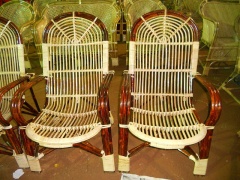Difference between revisions of "Bamboo Canes"
| Line 1: | Line 1: | ||
{{Infobox_Forest | {{Infobox_Forest | ||
| − | | image = | + | | image = bamboocanes.jpg |
| origin = This table shows only a selection of the most important countries of origin and should not be thought of as exhaustive. | | origin = This table shows only a selection of the most important countries of origin and should not be thought of as exhaustive. | ||
| − | | stowage factor = | + | | stowage factor = - m³/t |
| humidity and moisture = <ul><li>Relative humidity: %</li><li>Water content: %</li><li>Maximum equilibrium moisture content: %</li></ul> | | humidity and moisture = <ul><li>Relative humidity: %</li><li>Water content: %</li><li>Maximum equilibrium moisture content: %</li></ul> | ||
| ventilation = - | | ventilation = - | ||
Revision as of 09:55, 12 April 2012
| Infobox on Bamboo Canes | |
|---|---|
| Example of Bamboo Canes |  |
| Facts | |
| Origin | This table shows only a selection of the most important countries of origin and should not be thought of as exhaustive. |
| Stowage factor (in m3/t) | - m³/t |
| Humidity / moisture |
|
| Ventilation | - |
| Risk factors | - |
Bamboo Canes
Contents
Description
Many varieties of cane of a natural yellow colour. Usually shipped in bundles.
Should be of natural colour and free of insect infestation, which may result from prolonged storage. Canes of a grayish colour should be withheld from export. Bamboo canes are liable to split if overstowed with heavy cargo. See also Malacca Cane and Rattan.
Full information on this product is in the process of completion.











